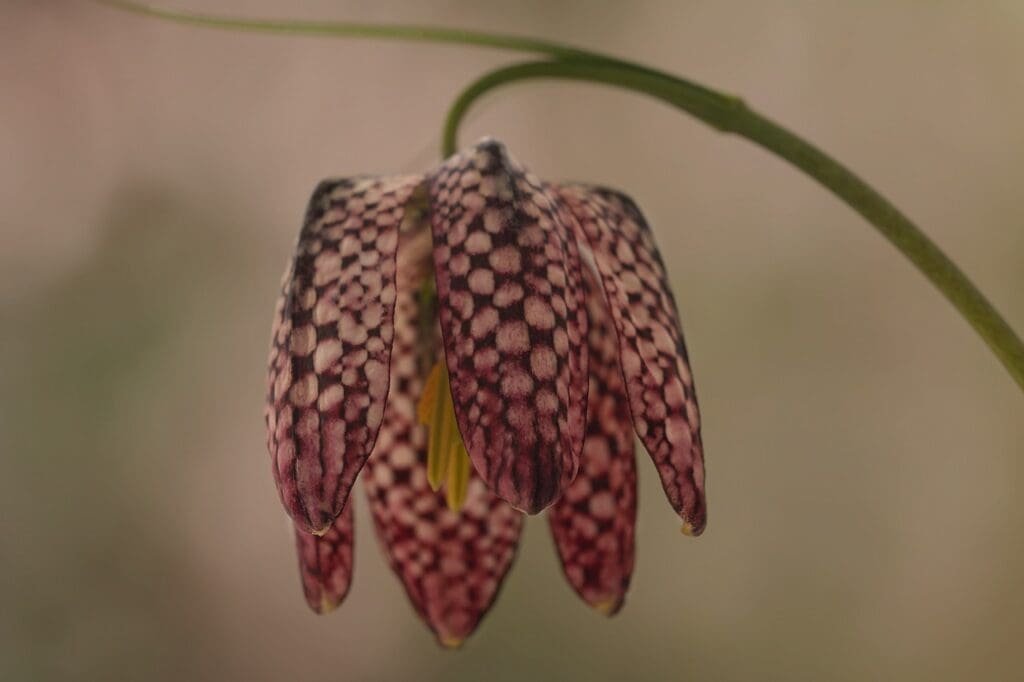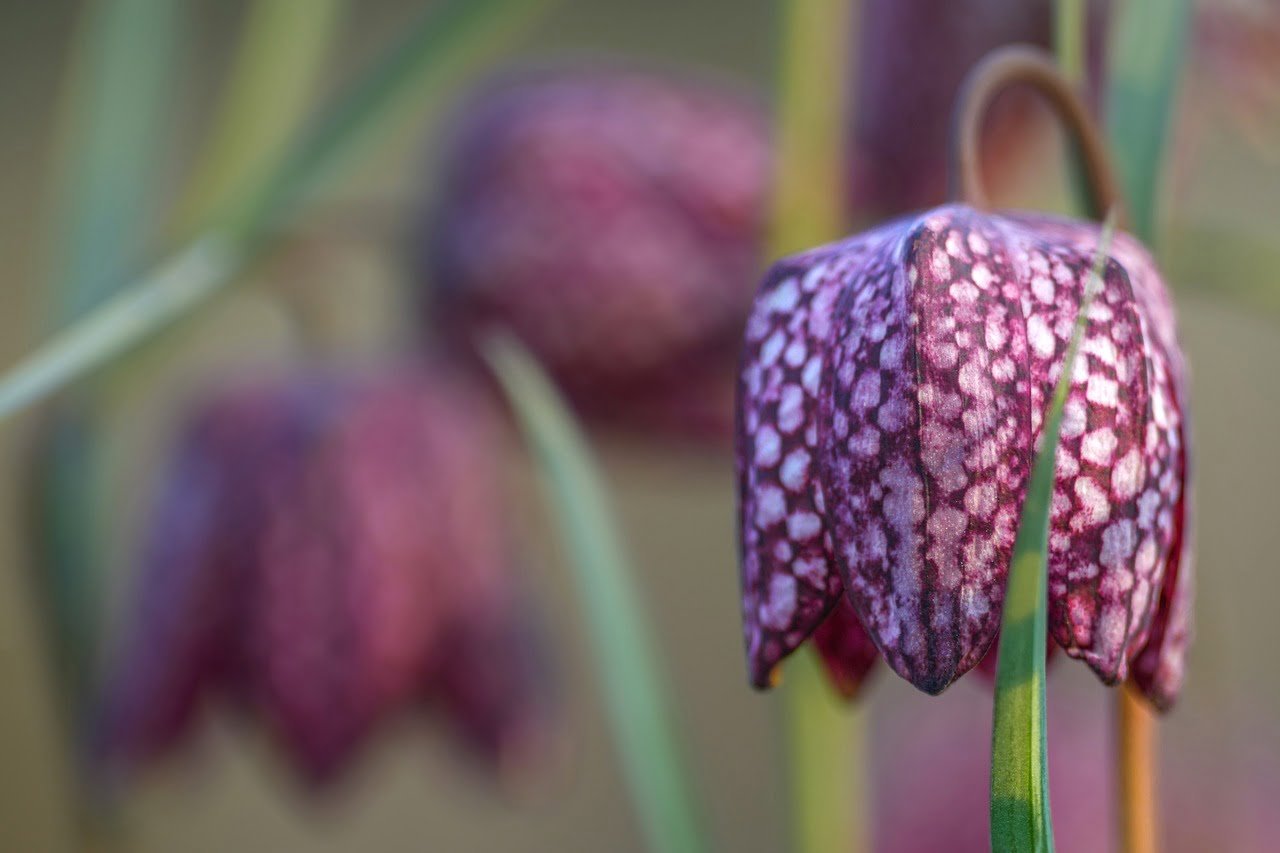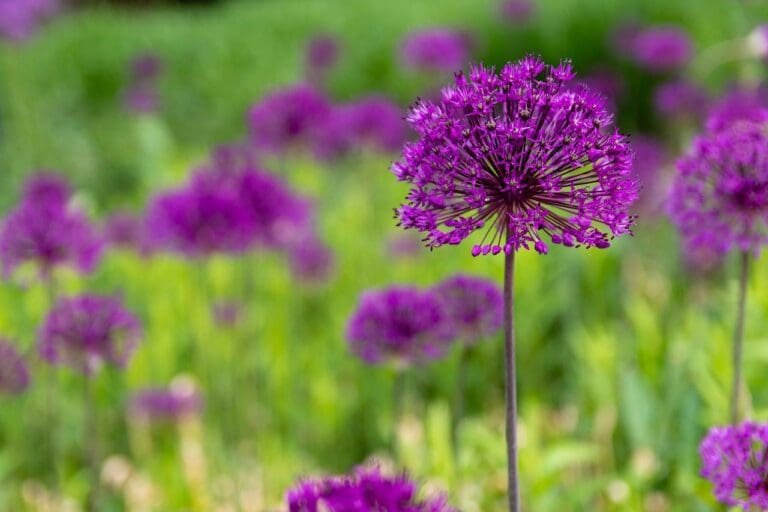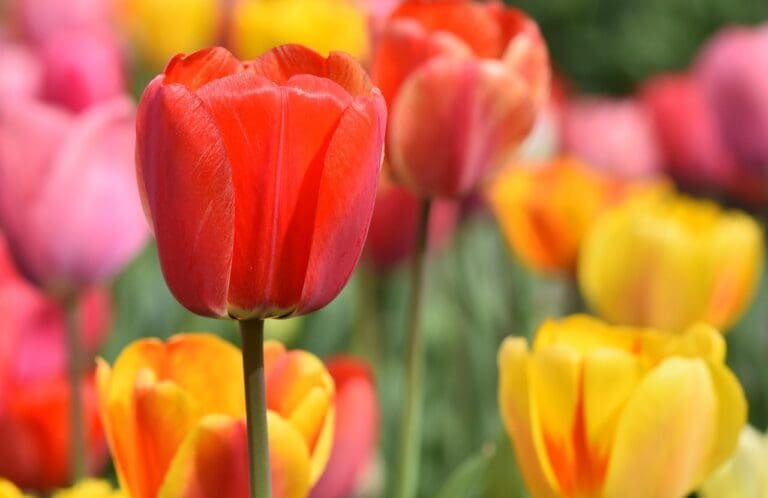The best time to plant Snake’s Head Fritillary (fritillaria meleagris) bulbs in the UK is in September and October.
Looking to spruce up your garden with a touch of wild beauty? The Snake’s Head Fritillary, also known as Fritillaria Meleagris, could be the perfect addition! Here in the UK, the optimal planting time for these bulbs is in September and October. This period gives the roots ample time to establish before the cool winter soil sets in, leading to a spectacular show of foliage and blooms the next spring, usually around April or May.
It’s worth noting that Snake’s Head Fritillaries are true UK natives, often spotted gracing damp meadows, woodlands, and riverbanks. Unfortunately, these beauties have seen a considerable decline in Europe, now sadly listed as endangered.
You might also be interested in: Spring Flowering Bulbs
Where to plant Snake’s Head Fritillary (fritillaria meleagris) bulbs?
So, you’ve got your bulbs ready, but where should they go? Snake’s Head Fritillaries are great at adding a wild, natural touch to the edges of lawns and untamed areas. Ideal locations are well-drained but stay a little moist during summer. Partially shaded areas that aren’t exposed to harsh summer heat work best. If you’re a little tight on space, not to worry, these flowers do wonderfully in pots and containers too! Just make sure they don’t dry out.
Top Tip
For Fritillaria Meleagris, plant the bulbs sideways to prevent water collection and rot. Keep them moist but well-drained!
How deep to plant Snake’s Head Fritillary (fritillaria meleagris) bulbs?
Once you’ve picked the perfect spot, it’s time to get planting! The bulbs should be tucked in about 6-10cm beneath the surface. A top tip from seasoned gardeners: plant them on their side to lower the risk of water ingress, which could lead to rot. Remember to keep a healthy distance of about 6-10cm between each bulb.

Will Snake’s Head Fritillary (fritillaria meleagris) come back every year?
The great thing about Snake’s Head Fritillaries is their recurring appearance. Yes, these charming blooms will return year after year, usually flowering each April or May, provided they’re in favourable conditions. That means soil that’s moist but well-drained.
Can Snake’s Head Fritillary (fritillaria meleagris) be grown in pots and containers?
Absolutely! Snake’s Head Fritillaries can thrive in pots and containers. Position them in a partially shaded area to prevent them from drying out. Choose a pot with good drainage and fill it with an equal mix of peat-free multipurpose soil and horticultural grit to avoid waterlogging. Do remember to take into account the final height of the fritillaria when choosing your pot, so the full-grown flowers will look proportionate and perfect.
Will Snake’s Head Fritillary (fritillaria meleagris) multiply?
Yes, they will! Once these bulbs feel at home, they’ll slowly multiply, given they have moist but well-drained soil. Keeping them well-hydrated is crucial for their survival and multiplication, ensuring you can enjoy their mesmerising beauty year after year. So, why not make a place for them in your garden this year? You won’t be disappointed!

Caring for Snake’s Head Fritillary Post-Bloom
Once your Snake’s Head Fritillary has put on its fabulous spring show, it’s time to think about post-bloom care to ensure it returns with gusto next year. First, resist the urge to cut back the plant immediately after it blooms. Instead, let the foliage die back naturally. This allows the plant to store energy for the next growing season. Also, consider applying a layer of mulch around the bulbs after the first frost to provide extra insulation during the winter months. Come spring, these steps will have your fritillaries ready to burst into bloom once again.
Ideal Companion Plants for Snake’s Head Fritillary
When planning your garden, it’s worthwhile to consider the companions of your Snake’s Head Fritillaries. These bulbs pair well with other spring bloomers that favour similar growing conditions. For a vibrant spring display, consider partnering them with Forget-Me-Nots or Primroses, which both offer contrasting colours that make the fritillaries’ unique pattern pop. Woodland plants such as Ferns and Hostas can provide attractive foliage backdrop during the summer months, when fritillaries have retreated below ground.
Snake’s Head Fritillary and Wildlife
Aside from their undeniably aesthetic appeal, Snake’s Head Fritillaries also play an important role in supporting local wildlife. Their bell-shaped flowers are a favourite among early-emerging bees and other pollinators, providing a valuable nectar source in early spring when food can be scarce. By planting Snake’s Head Fritillaries, you’re not just enhancing your garden – you’re also contributing to local biodiversity by supporting these crucial pollinators.
Frequently Asked Questions
Q. Do Fritillaria come back every year?
Yes, they do! Fritillaria Meleagris, or Snake’s Head Fritillary, is a perennial plant, meaning it can bloom year after year, provided it’s well taken care of, and the conditions are suitable.
Q. How deep should Fritillaria bulbs be planted?
Fritillaria bulbs should be planted at a depth of approximately 6-10cm. A good rule of thumb is to plant bulbs two to three times their height.
Q. Is Fritillaria Meleagris a perennial?
Indeed, Fritillaria Meleagris is a perennial. This means it’s capable of living more than two years, flowering over and over every spring.
Q. Can you plant bulbs too deep?
Yes, bulbs can indeed be planted too deep. Planting bulbs too deep can delay sprouting or prevent the bulbs from breaking through the surface at all. For Fritillaria bulbs, stick to the recommended depth of 6-10cm.
Q. Do Fritillaries spread?
Absolutely! Fritillaries can spread over time, albeit slowly. In favourable conditions (moist but well-drained soil), they will multiply, adding an increasing number of striking blooms to your garden each spring.



